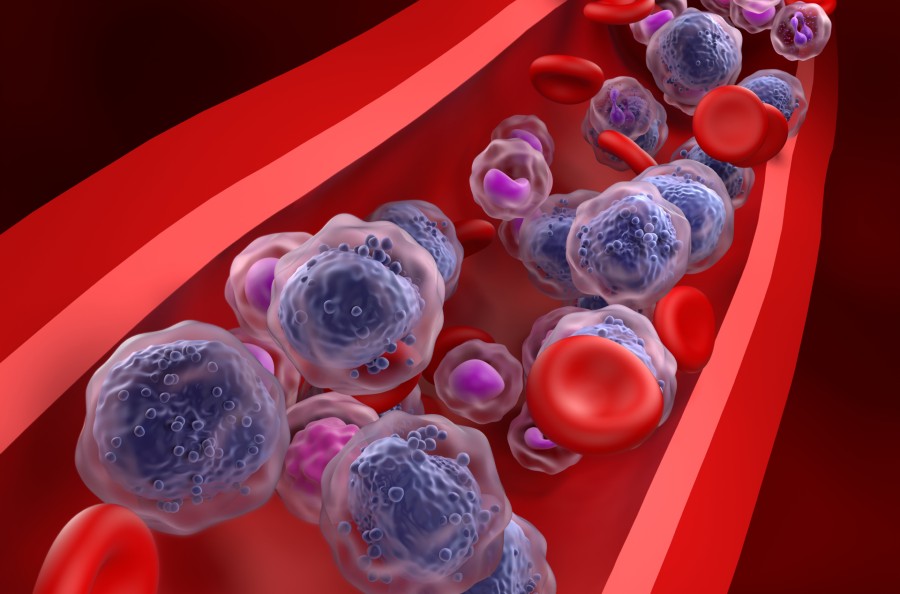Many patients treated for acute myeloid leukemia (AML) ultimately relapse as the cancer evolves to evade therapy over time. To develop more effective treatments for the cancer, scientists from Dana-Farber Cancer Institute and elsewhere used a different approach to search for potential therapeutic targets. Details of what they did and their findings are published in a new Nature paper titled, “Targetable leukemia dependency on noncanonical PI3K𝜸 signaling.”
Rather than focusing on genetic mutations as targets, the study’s first author Qingyu Luo, MD, PhD, used genome-wide CRISPR interference to search for genes that AML cells rely on to grow. Luo is a research fellow in the laboratory of Andrew Lane, MD, PhD, a clinician-scientist in the adult leukemia program at Dana-Farber and the study’s principal investigator.
Luo’s analysis identified a subset of leukemia cells that rely on a gene called PI3KR5 to survive. This gene produces an important portion of the PI3K𝜸 complex which has not been studied in AML. It’s an attractive target in part because eganelisib, an experimental immunotherapy that has been tested in some solid tumor trials, inhibits the PI3K𝜸 complex. What Luo, Lane, and their colleagues found was a completely different mechanism of action that the drug might use to stop leukemia cells’ growth.
To test their hypothesis, the researchers used eganelisib to treat animal models with patient-derived leukemia xenografts. Xenografts that were predicted to be highly dependent on PI3K𝜸 shrank with treatment. Also, animal models survived longer when they were treated with eganelisib, according to the paper.
They also looked at AML data from the Cancer Genome Atlas and found that patients with cancers predicted to be sensitive to eganelisib did not respond well to other kinds of AML therapies. It suggests that these patients, who could be identified by high levels of PI3KR5 expression, might benefit from alternative therapies like eganelisib.
Taking things a step further, Luo treated the animal models with a combination therapy made up of eganelisib and cytarabine, which is the most used AML therapy. Models treated with the combination therapy survived longer than those that were treated with cytarabine alone regardless of the leukemia’s sensitivity to PI3K𝜸.
These observations suggested that the two medicines likely work synergistically. Further testing showed that inhibiting PI3K𝜸 suppressed an energy pathway in leukemia cells. Luo also discovered that leukemia cells that survive cytarabine treatment tended to be more dependent on PI3K𝜸 post-treatment than they were prior to treatment. It suggests that the surviving leukemia cells—which are the cause of AML relapse—could be vulnerable to the combination therapy.
The team is now designing clinical trials that will test eganelisib alone and in combination with cytarabine in human patients. “Given what we’ve observed, we can move very quickly to take these medicines, which appear to be safe and well tolerated, to patients with AML,” Lane said. “We are planning clinical trials to start hopefully within the next year.”


